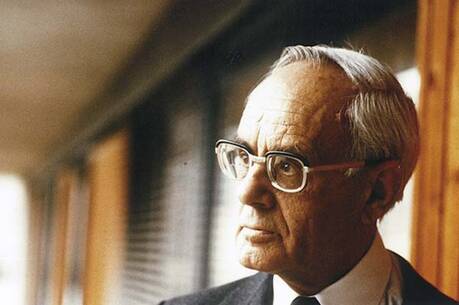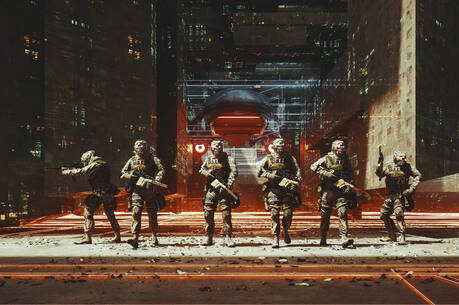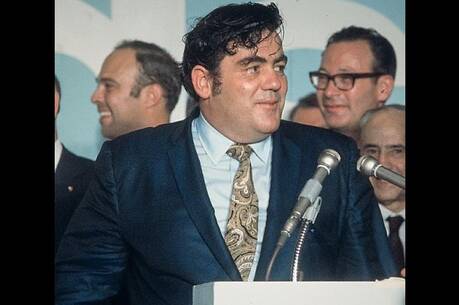Clarifying Life
Ron Hansen has established himself as a significant contemporary American writer, with five novels and a collection of stories that have earned him numerous awards and fellowships as well as an endowed chair at Santa Clara University in California. He has now collected 14 essays variously published over the past decade in a volume that borrows its allusive title from that wily New Englander Robert Frost. The subtitle, however, is pure heartland frankness, Essays on Faith and Fiction. And so they are.
Ron Hansen once named his three most determining biographical facts: he is a native son of the Midwest, a Catholic and a twin. His first two novels and a collection of stories titled Nebraska pay tribute to his birthplace. In his subsequent splendid novels, Mariette in Ecstasy and Atticus, Hansen joins company with Bernanos and Greene as an explorer of the Catholic sensibility. And I’m happy to say that he has finally tackled, with typical self-mockery, the doppelgänger phenomenon in The Story of Cain, republished here.
The other salient fact about Ron Hansen, of course, is that he has made himself into a fine writer of fiction, and these essays alternately wrestle with and celebrate the task of writing out of a clear faith commitment without turning into either an apologist or a hagiographer. Of the 14 essays, half focus on specific instances of art confronting belief and vice versa. Hansen, like Flannery O’Connor, takes courage from Aquinas’s insistence that the work of art is good in itself, not depending on the good intentions of its maker. Such a conviction frees the artist to be himself, honestly describing the world and the actions of grace as he sees them. No need to preach or pontificate, just be true to one’s beliefs and the puzzles of the world. And if that sometimes disturbs the pious or the prudish, the writer can take comfort from the parables and the actions of Jesus that often had the same effect.
Thus craft matters. Hansen’s initial puzzlement over Gerard Manley Hopkins’s poetry gave way before an endorsement from his early hero Dylan Thomas. He writes about Hopkins’s incarnational genius with verve and passion. Indeed, he took Hopkins’s name on the proffered chair at Santa Clara as a sign that he should accept it.
Two other essays in the collection have a more formally theological bent. The one on the Eucharist appeared in that fine collection, Signatures of Grace; the second, Stigmata, was also written for an anthology. In both, Hansen gracefully weaves autobiography, scholarship and faith into a clear exposition of how God continues to appeal to us through our flesh and blood, sacramentally in the Eucharist, physically in the case of stigmatics. That we find the latter so much more troubling than the former is perhaps a measure of our secularized imaginations.
On a lighter note, Hansen indulges in some autobiography while commenting on the Genesis story of Cain and Abel. Somehow Ron always felt he played Cain to his twin Rob’s Abel. When denied election as patrol leader for their Boy Scout troop on the grounds that it would make Rob feel bad, Ron fumes all the way home, finally shouting, It’s always going to be this way! You’re always going to hold me back! Is it any wonder that when he read Rob the essay many years later, Rob replied, You know, it’s funny but in my memories you’re always Cain, too.
Finally, I can’t ignore the two longest essays in the book, both on Jesuit themes, one about the founder, the other about his martyred sons in El Salvador. Hansen is drawn to Ignatius Loyola by his many years of studying and teaching in Jesuit schools, but also because Iñigo was a Basque like Hansen’s mysterious grandfather, who gets a chapter, too. In telling the pilgrim’s story, Hansen follows the traditional accounts, but at one point he introduces a caveat: I feel farthest from Iñigo when he seems to ignore his needs and inflict miseries upon himself...to go over the top, to hate and scourge what is wholly natural.... He can understand the different culture of that time with its war between flesh and spirit, but he also knows its troubling, contemporary shadow. We have not completely shaken those notions to this day.
His essay on the Salvadoran martyrs is heartfelt and moving, and I recommend it to anyone who doubts the power of the Gospel message to shake the world today. These six men were killed because they insisted, loudly and repeatedly, on supporting the poor and the disenfranchised in their country. And they did it precisely for Gospel reasons. But a brief passage in the foreword to the essay speaks even more powerfully to the theme of martyrdom and its fruitsand to Hansen’s narrative skill and sacramental imagination: A few weeks after the cold-blooded assassinations of November 16 [1989], an American Jesuit visited the hillside residence where the murders occurred. The house interior had been torn apart by the soldiers, chunks of wall were shot out by stray bullets, wherever he looked there were signs of wreckage and violence, and yet as he paused in a hallway he was suddenly overcome with a feeling of immense and surprising joy. Whatever anger, despair, and sadness he was feeling gave way to a mysterious happiness and peace. The American just stood there for a moment, fully absorbing it, and then he noticed in the hallway an older Jesuit resident who smiled as he walked past and simply said, I see you have found the spot.’
This article also appeared in print, under the headline “Clarifying Life,” in the April 9, 2001, issue.








